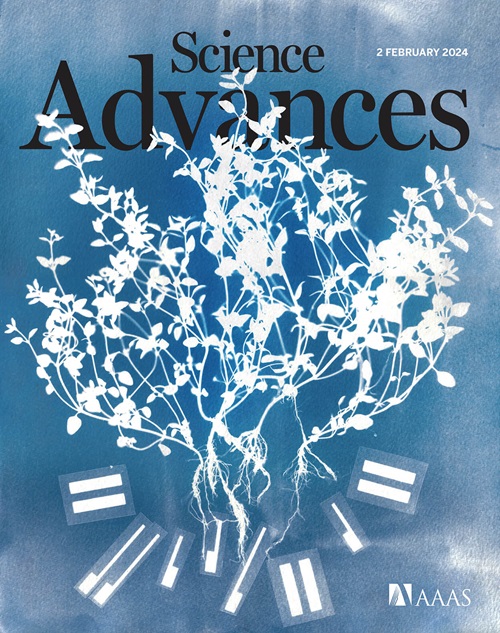湿致界面不稳定性:气液界面液滴喷射的一种机制
IF 11.7
1区 综合性期刊
Q1 MULTIDISCIPLINARY SCIENCES
引用次数: 0
摘要
单分散微液滴的高通量生产已经彻底改变了许多领域,通常依赖于复杂微流体通道中的剪切诱导乳化来诱导瑞利-高原不稳定性。由于该机制高度依赖于流体的物理性质和流动条件,因此其鲁棒性较低。在这里,我们报告了一种强大的乳化机制——润湿诱导的界面不稳定性——用于液滴的喷射。我们发现,当空气中悬垂的微滴与不混相的湿体相接触时,会引起悬垂微滴的界面不稳定,然后迅速分解成体相。这简化了单分散微液滴的生产,使用位于气液界面上方的喷嘴,不需要复杂的微通道。我们证明,该方法具有高度可扩展性,并且对流体物理性质和流动条件的变化具有出色的鲁棒性,包括高粘性非牛顿流体(56,600毫帕斯卡-秒)。这种机制为传统的瑞利-高原不稳定性乳化提供了一种更简单的替代方法,为工业应用和微观界面科学提供了机会。本文章由计算机程序翻译,如有差异,请以英文原文为准。

Wetting-induced interfacial instability: A mechanism for droplet emission at air-liquid interfaces
High-throughput production of monodisperse microdroplets has revolutionized many fields, typically relying on shear-induced emulsification in intricate microfluidic channels to induce the Rayleigh-Plateau instability. This mechanism exhibits low robustness due to its high dependence on the physical properties and flow conditions of fluids. Here, we report a robust emulsification mechanism—wetting-induced interfacial instability—for droplet emission. We find that, when pendant microdroplets in the air contact with an immiscible wetting bulk phase, it triggers interfacial instability in the hanging droplets and then their rapid breakup into the bulk phase. This simplifies the monodisperse microdroplet production using a nozzle positioned above an air-liquid interface, requiring no complex microchannels. We demonstrate that this method exhibits highly scalable production and exceptional robustness against variations in physical properties and flow conditions of fluids, including highly viscous non-Newtonian fluid (56,600 millipascal-seconds). This mechanism provides a simpler alternative to the traditional Rayleigh-Plateau instability for emulsification, offering opportunities for industrial applications and insights into microscale interfacial science.
求助全文
通过发布文献求助,成功后即可免费获取论文全文。
去求助
来源期刊

Science Advances
综合性期刊-综合性期刊
CiteScore
21.40
自引率
1.50%
发文量
1937
审稿时长
29 weeks
期刊介绍:
Science Advances, an open-access journal by AAAS, publishes impactful research in diverse scientific areas. It aims for fair, fast, and expert peer review, providing freely accessible research to readers. Led by distinguished scientists, the journal supports AAAS's mission by extending Science magazine's capacity to identify and promote significant advances. Evolving digital publishing technologies play a crucial role in advancing AAAS's global mission for science communication and benefitting humankind.
 求助内容:
求助内容: 应助结果提醒方式:
应助结果提醒方式:


